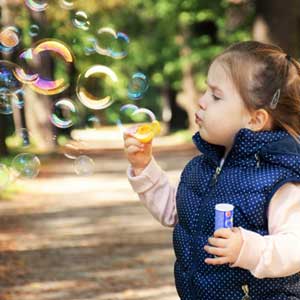If you’ve answered any of these questions with “seek help”, then chances are you are on the lookout for behavioral + emotional red flags in your child. Did you know these red flags can also be found in your child’s play?
The way to identify these is to pay attention, be present, listen and observe to the quality and content of your child’s play. These red flags might be tell you it’s time to seek help, preferably with a play therapist (read here to know more about play therapy), and to help your child tackle whatever anxiety or emotional discomfort they might be experiencing. Here is a list of the most frequent red flags children might display:
Aggressive play
Before we discuss aggressive play it’s important to differentiate three different ideas: aggressive themes, aggressive play and rough play. Aggressive themes refer to the content of the playing narrative: what type of stories is your child playing out? What type of dialogue are they including in their play? If there is conflict or strong negative emotions associated with this, it’s possible that your child is displaying an aggressive theme. Is this something you should worry you? Not necessarily – remember that play is your child’s language, and if they are displaying these emotions in their fantasy, that just means they won’t need to act them out in real life. However, if this becomes a consistent trend and extends to their way of relating to people, observe it closely.
Aggressive play refers to the way your child interacts with the toys, materials, and other people involved in their play. Is your child throwing toys to other people? Picking fights with whoever plays with them? Insulting or throwing out mean comments? If you’ve answered yes to any of these questions, then your child might display an aggressive play. Which shouldn’t be confused with natural “rough and tumble play”, which is a normal part of a healthy childhood development.
Inconclusive and/or persistently doomed endings in play
This refers to the content, narrative and storytelling of the playing scenario. Most children’s stories have an ending. Some times they don’t necessarily make sense to adults, but they provide a closure and ending for the child. When the playing narrative is inconclusive or your child displays a consistently doomed ending, however, it may be given us a sign of a complex emotional state in the child.
If we use the premise that through play children are able to manifest their inner lives, then we can comprehend why an inconclusive finale or a doomed ending might be worrisome. It might let us know that the child doesn’t know which resources to use for problem solving or is having a negative outlook on life – or alerting us about an inner conflict we would be unaware of otherwise. If you will interact and ask your child about this, make sure to keep the conversation about “the game”. For instance, rather than saying “why are your games so sad” it’s better to ask “I wonder what happens in these worlds where everyone is so sad most of the time”.
Strict or constrictive play
What’s the difference between bending a ruler and bending a straw? Which one will break faster? The ruler is doomed to fail this test of flexibility because that’s precisely what it lacks. The same happens with human beings: the stiffer or less flexible we are, the more anxious our inner lives. And in children, this sometimes can be displayed in their play.
Whenever you feel your child’s “fantasy worlds” or playing narratives are becoming too constrictive, this might alert you about a possible inner rigidity. These are the type of children who struggle with low frustration tolerance or adapting to new situations, which can become a difficulty in their lives.
Fantasy-aversive play
Does your child’s games and narrative seem too real? Do they have difficulties surrendering to the fantasy? Do they have trouble letting go their imagination? If the answer to any of these questions is ‘yes’, then your child might be having some difficulty immersing into fantasy.
Fantasy is important in play because it helps children rehearse and play out scenarios from their real lives, even though they are disguised as magical worlds. In a psychological sense, these fantasy worlds help children feel less anxious about working through their inner struggles, which may include anything from sibling rivalry or a difficult parent situation. When a child loses their ability to fantasize, they begin to lose their hope that there is a resolution to their angst. And, consequently, a lack of hope might bring out a longlist of psychological disturbances.
Paying attention to your child’s play is not only engaging and nurturing to your parent-child bond, but it can be incredibly enlightening and a great tool towards mental health prevention. The key is to not question, not impose your ideas of what their play should be about or what it should include. Just listen and observe.
Written by: Mariana Plata is a licensed psychologist from Panama with a Master’s degree in Child and Adolescent Clinical Psychology in California. She is also a play therapist in training from the Association for Play Therapy (APT), mental health writer and public speaker.
